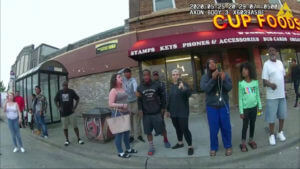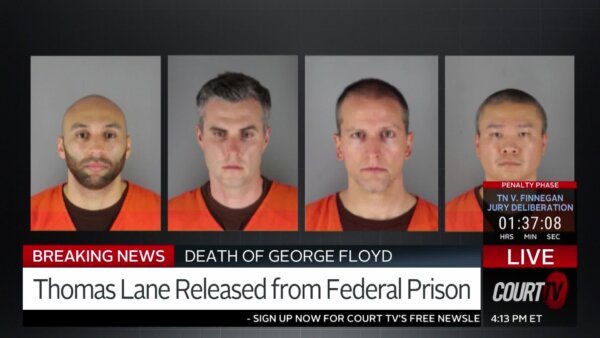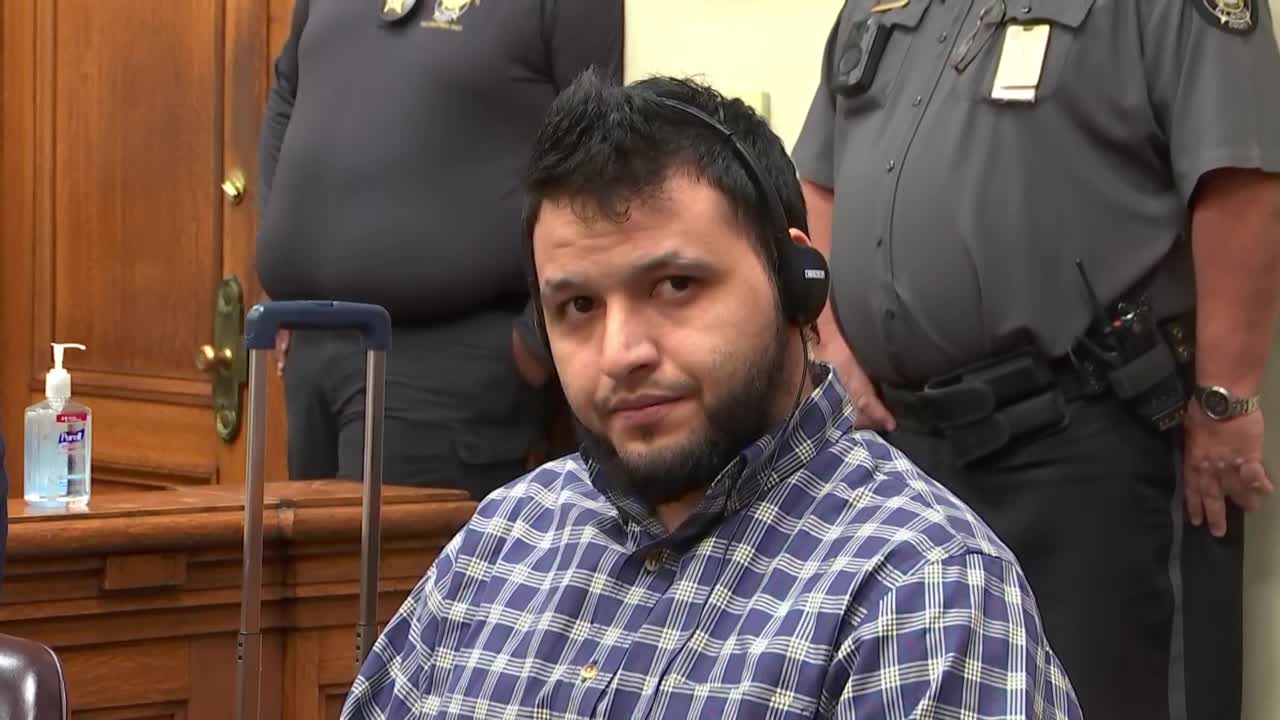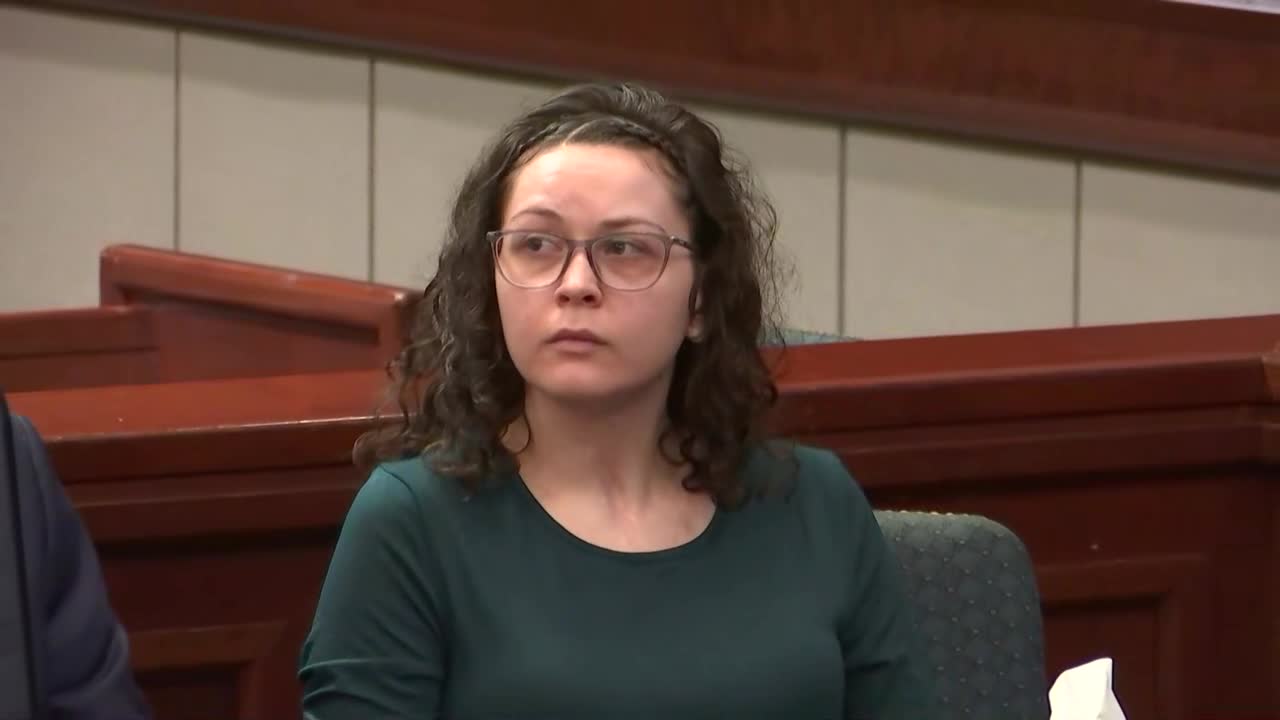MINNEAPOLIS (AP) — The convenience store cashier who was handed a counterfeit $20 bill by George Floyd — setting in motion the Black man’s ill-fated encounter with police — testified Wednesday that he watched Floyd’s arrest outside with “disbelief — and guilt.”
“If I would’ve just not tooken the bill, this could’ve been avoided,” 19-year-old Christopher Martin lamented at Officer Derek Chauvin’s murder trial, joining the burgeoning list of onlookers who expressed a sense of helplessness and lingering guilt over Floyd’s slow death last May.
Prosecutors used Martin and other witnesses to help lay out the rapidly escalating sequence of events that ended in tragedy. They also played store security video of Floyd inside Cup Foods and still more footage of him outside, adding to the mountain of video documenting what happened.
Together, the witness accounts and video began to show how events spun out of control, as a scene of people apparently joking around inside the neighborhood market soon gave way to the sight of officers removing Floyd from his SUV at gunpoint, struggling to put him in a squad car, and finally putting him on the ground, where he was seen kicking as police forced him onto his stomach.
>>>READ MORE: MN v. Chauvin: Daily Trial Highlights
Martin said he immediately believed the $20 that Floyd gave him in exchange for a pack of cigarettes was fake. But he accepted it, despite a store policy that said the amount would be taken out of his paycheck, because he didn’t believe Floyd knew it was counterfeit and “I thought I’d be doing him a favor.”
Martin said he initially planned to just put the bill on his own “tab” but then second-guessed himself and told a manager, who sent Martin outside to ask Floyd to return to the store. But Floyd and a passenger in his SUV twice refused to go back into the store to resolve the issue, and the manager had a co-worker call police, Martin testified.
Floyd was later arrested outside, where Chauvin pinned his knee on the man’s neck for what prosecutors said was 9 minutes, 29 seconds, as a handcuffed Floyd lay face-down on the pavement. Floyd, 46, was later pronounced dead at a hospital.
Chauvin, 45, is charged with murder and manslaughter. The most serious charge against the now-fired white officer carries up to 40 years in prison.

This image from a police body camera shows people gathering as former Minneapolis police officer Derek Chauvin was recorded pressing his knee on George Floyd’s neck for several minutes as onlookers yelled at Chauvin to get off and Floyd saying that he couldn’t breathe on May 25, 2020 in Minneapolis. From the moment a bystander filmed the incident, video shaped the public’s understanding of Floyd’s death. (Minneapolis Police Department via AP)
Floyd’s death, along with the harrowing bystander video of him gasping for breath as onlookers yelled at Chauvin to get off him, triggered sometimes violent protests around the world and a reckoning over racism and police brutality across the U.S.
Martin said that inside the store, he asked Floyd if he played baseball, and Floyd said he played football, but it took Floyd some time to respond, so “it would appear that he was high.” But he described Floyd as friendly and talkative.
The defense has argued that Chauvin did what he was trained to do and that Floyd’s death was not caused by Chauvin’s knee on his neck, as prosecutors contend, but by a combination of illegal drug use, heart disease, high blood pressure and the adrenaline flowing through his body.
After police arrived that day, Martin went outside as people were gathering on the curb and yelling at officers, then called his mother, with whom he lived in an apartment upstairs, and told her to stay inside. He then took out his phone and began recording.
He said he saw Officer Tou Thao push one of his co-workers. Martin said he also held back another man who was trying to defend himself after being pushed by Thao.
Martin later deleted his recording, explaining that the ambulance didn’t take the fastest route to the hospital so he thought Floyd died.
“I just didn’t want to have to show it (the video) to anyone,” he said.
Another witness, who parked behind the SUV Floyd was driving, said he saw two officers approach Floyd’s vehicle as one drew a gun, opened the driver’s door and pointed the weapon at Floyd.
Christopher Belfrey, 45, said he was “startled,” so began taking video through his windshield. Prosecutors played some of that video, which showed officers taking Floyd out of the car, and video that Belfrey took later from across the street that showed Floyd seated against the wall of a restaurant across from Cup Foods.
Another witness wept openly after watching police body camera video of Floyd struggling with officers as they tried to get him into the squad car.
Charles McMillian, 61, said he was driving past the area and stopped when he saw police activity. He was heard on a body camera telling Floyd — who was becoming frantic and saying he was claustrophobic — to cooperate with officers trying to push him into the car.
“You can’t win,” McMillan told Floyd.
Eventually, Chauvin and Thao arrived on the scene, and Floyd thanked officers as they pulled him out of the car and put him on the ground.
McMillian, through tears, testified, “I feel helpless” as he explained why the video made him emotional. The court took a short break.
McMillian said he recognized Chauvin from the neighborhood and talked to him five days earlier, telling him that at the end of the day, everyone wants to go home to their families safe.
>>>HOW TO WATCH: Court TV’s Live Coverage of MN v. Derek Chauvin
On Tuesday, a parade of witnesses testified that they and other bystanders in a group of about 15 people on the sidewalk became upset as they repeatedly begged Chauvin to take his knee off Floyd’s neck. But Chauvin refused to ease up, and Thao kept back those who tried to intervene, including a Minneapolis firefighter with EMT training.
The testimony from the prosecution witnesses was apparently aimed at showing that Chauvin had multiple opportunities to think about what he was doing and change course.
But Chauvin attorney Eric Nelson also repeatedly sought to bring out evidence that the onlookers were becoming agitated, in an apparent attempt to show that the police were distracted by what they perceived as a growing and increasingly hostile crowd.
Wednesday morning’s testimony was briefly interrupted when a juror stood and raised her hand and gestured toward the door. She later told the judge that she had been feeling stress and having trouble sleeping, but told the judge she was OK to proceed.
Find Court TV’s full coverage on MN v. Derek Chauvin:


























